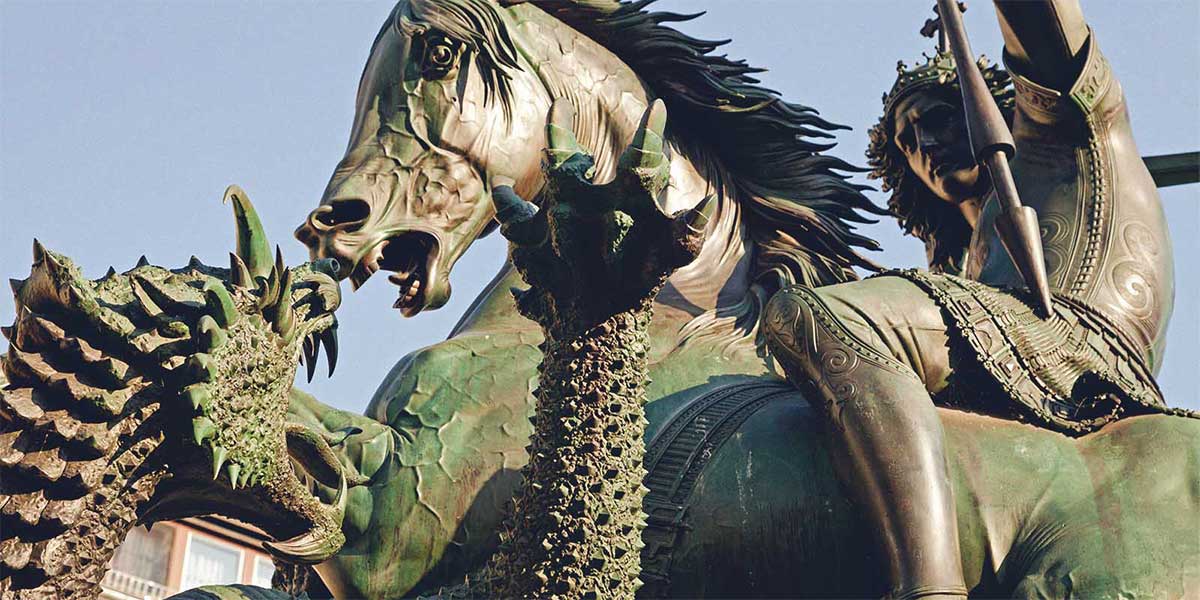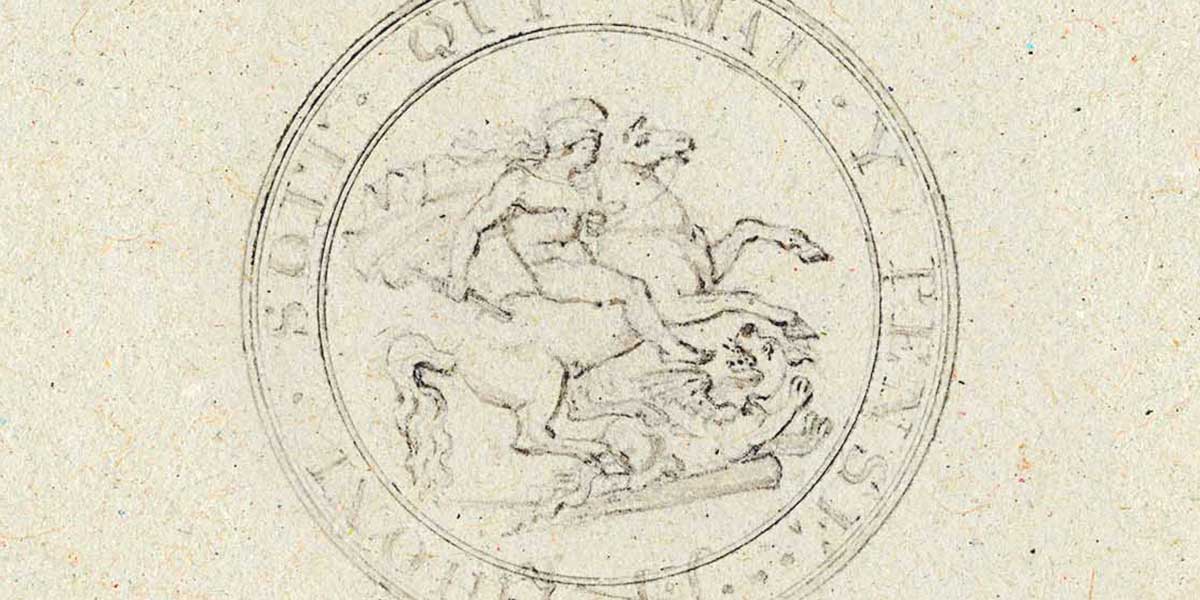According to legend, the inspiration for St George was a Roman soldier in the third century AD who was condemned to death by the Roman Emperor Diocletian for refusing to give up his Christian faith. Over the following centuries, St George became a hero figure symbolising courage and strength.

In his book Gesta Regnum, the historian William of Malmesbury recorded a vision of St George joining English knights in the Battle of Antioch in 1098. The description inspired a vigorous cult of St George amongst the crusading knights. A shrine was erected for St George at Lydda, which was supposedly the place where the Greek hero Perseus rescued Princess Andromeda from an evil sea serpent. Perhaps that’s why the saint’s story became intertwined with the legend of killing a ferocious creature, as the most famous tale of St George is saving a princess from a dragon that demanded human sacrifice. Whatever the case, the shrine soon became a special place for crusading knights on their way to the Middle East.
By the thirteenth century, St George the dragon slayer was being portrayed with the red cross of the crusader. He symbolised the victory of good over evil, and became one of medieval Europe’s greatest legends. By 1348, he had become such a symbolic figure in England that Edward III made him the nation’s patron saint. The king also instigated the Order of the Garter, the highest award he could bestow on his subjects. Its official sanctuary is St George’s Chapel at Windsor Castle and its insignia contains the badge of St George slaying the dragon.

Over the ages, St George continued to inspire people. For instance, William Shakespeare ends Henry V’s famous battle speech in the play of the same name with the words “Cry ‘God for Harry, England, and Saint George!’”.
The patron saint also struck a chord with his namesake, George IV. When George IV wanted to introduce a new coin he picked the saint as the coin’s subject. The new gold Sovereign was created in 1817 and was designed by the Italian engraver Benedetto Pistrucci. His approach to the design was a refreshing change to the heraldry that had traditionally featured on coins.
Pistrucci created a motif of St George slaying the dragon, and gave him a sense of movement and confidence. St George was portrayed as a naked Greek horseman, effortlessly keeping control of his horse while fighting the wounded dragon. The coin design has become a classic, and the coin expert Humphrey Sutherland praised it as one of the noblest innovations in English coin design from 1800 to the present day. Many collectors and historians would agree with him.
